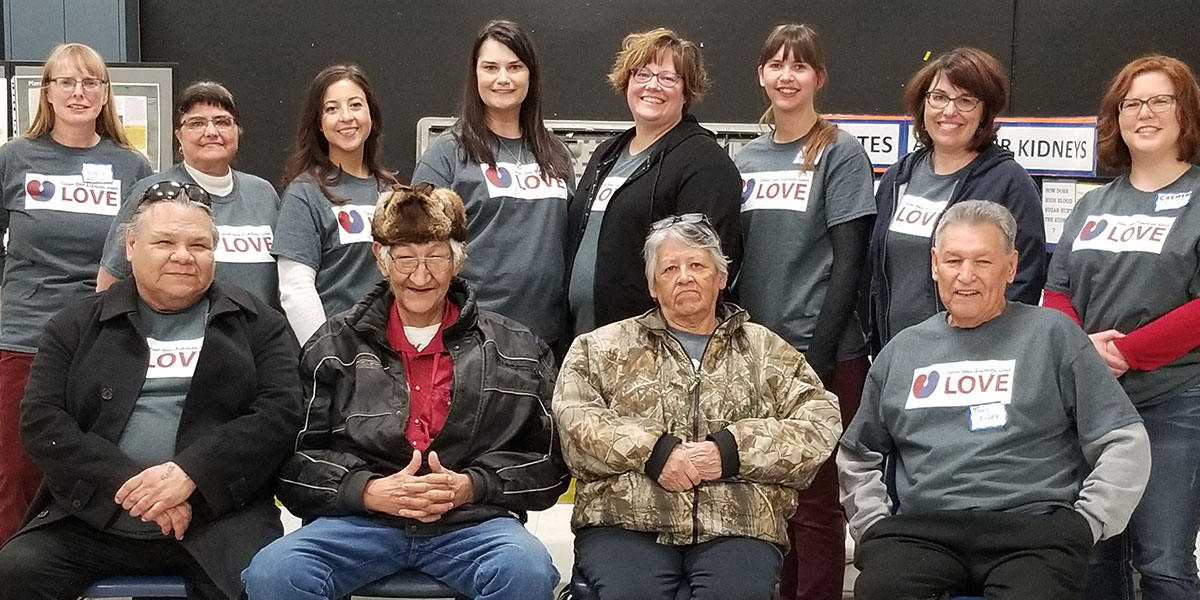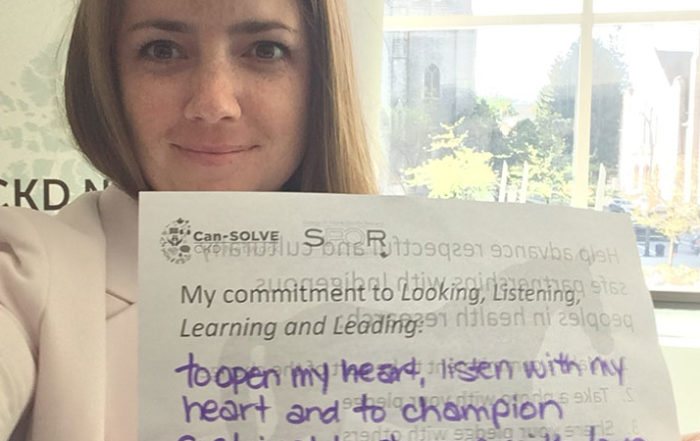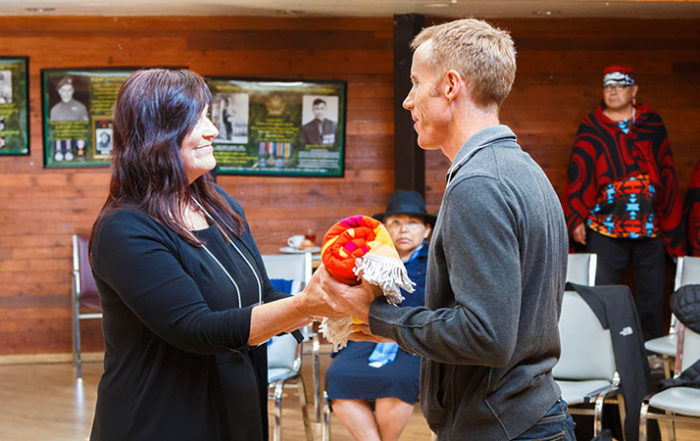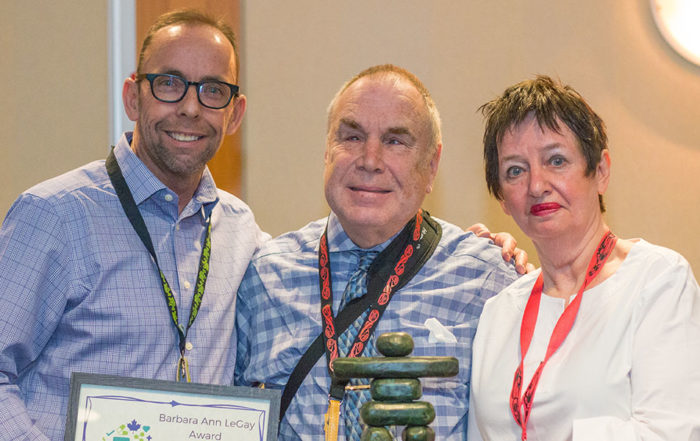 In Canada, there are many educational materials or tools – such as booklets, websites and videos – for patients to learn about chronic kidney disease and treatment options. To meet the needs of patients who aren’t fluent in English or French, some of these tools have been translated into other languages.
In Canada, there are many educational materials or tools – such as booklets, websites and videos – for patients to learn about chronic kidney disease and treatment options. To meet the needs of patients who aren’t fluent in English or French, some of these tools have been translated into other languages.
However, sometimes the content doesn’t translate well, and important cultural connections aren’t made. As a result, patients and families may not have the information they need to make informed decisions about treatment options. That’s a lesson clinical nephrologist (kidney specialist) Dr. Joanne Kappel has learned over her many years of practice in Saskatoon where she sees a large number of Indigenous patients and families.
“Some of the words used in the educational tools aren’t even in Indigenous languages,” says Dr. Kappel. “We need to develop tools so they make sense to Indigenous people.”
Working together
To fill that gap, Dr. Kappel and Dr. Carol Bullin, also based in Saskatoon, are overseeing one of Can-SOLVE CKD’s patient-oriented research projects, Improving Indigenous Patient Knowledge about Treatment Options for Failing Kidneys. The project is taking place in British Columbia, Saskatchewan and Ontario with different team members connecting with Indigenous communities in their respective provinces to co-develop educational materials. The materials will be tested in additional communities and ultimately shared with, and adapted by, other Indigenous communities across the country.
“By working together to develop educational tools that are culturally specific, we will have content that is relatable and relevant to the daily lives and practices of Indigenous patients and their families,” says Dr. Bullin. “This will help with sharing knowledge and making informed decisions about treatment options.”
Dr. Kappel adds that this isn’t a traditional research project in the scientific sense. “This is sitting down with Indigenous people and other members of our research team and working together to develop tools that people can use.”
Dr. Bullin agrees. “This is qualitative research looking at lived experiences of people’s own interpretations of their kidney condition.”
One in 10 Canadians are living with kidney disease. Working with Indigenous peoples is particularly important because they experience the disease at a higher rate than the overall population.
Drs. Kappel and Bullin, who are co-leading the project’s initiatives in Saskatchewan, notice the disparity. For example, while the Canadian healthcare system doesn’t measure the rate of chronic kidney disease by ethnicity, it’s estimated that in Saskatchewan where Indigenous peoples make up about 16 percent of the overall population, about 50 percent of patients on dialysis to treat advanced kidney disease are Indigenous.
Building trust
The Saskatchewan team is investing a lot of time up front on building relationships with the northern community of Île-à-la-Crosse where they will work with community members to co-develop educational tools. “We are doing a lot of background work of initiating and building community engagement to develop a relationship of trust,” says Dr. Kappel.
“The big piece with this project is that you can’t just go into the community and say, ‘OK. We’re here. Can we recruit participants?’” says Dr. Bullin. “We have to be advised and integrate culture and traditions into the project.”
The team has worked with Elder George Laliberté to be properly introduced to Île-à-la-Crosse. “In terms of being able to make connections, he knows everybody,” says Dr. Bullin. “He’s been invaluable in guiding us and directing us for our foundational work.” Sharing in cultural practices, the team has participated in two sweat lodges and a feast. As well, at the start of meetings, Elder George is presented with ceremonial tobacco, and he opens and closes meetings with a prayer.
“Every Indigenous group is different, and it’s been an honour participating in the culture and traditions of Île-à-la-Crosse,” says Dr. Kappel.
Working with patient advisors
As a patient-oriented research project, it’s essential patient partners – patients and their family or friends who play caregiving roles – are involved on the research team. In addition to Elder George’s contributions, Dr. Kappel has received general advice about working with Indigenous peoples from Mary Beaucage who is Co-Chair of Can-SOLVE CKD’s Patient Council and a member of the network’s Indigenous Patient Engagement and Research Council.
In Saskatchewan, the bulk of patient partner participation will be with community members of Île-à-la-Crosse. “These patient partners will make up our Educational Working Group, and although they may come from the same community as Elder George, they will have different lived experiences and ideas,” says Dr. Bullin. “We need that diversity.”
Developing a relationship
To get to know the people of Île-à-la-Crosse better, to learn from them, and to provide them with useful information about kidney health, a Kidney Wellness Day was held in the community in March 2018. The event was a collaborative partnership among members of the community, the Can-SOLVE CKD team, the Saskatchewan Branch of the Kidney Foundation of Canada, and the Chronic Kidney Disease Clinic of Saskatoon’s St. Paul’s Hospital, including the clinic’s Kidney Community Health program.
“Together with Elder George, a dietician, a diabetic nurse educator, a clinical nurse educator, a pharmacist, a patient educator and a member of the Kidney Foundation, we had booths and three different sessions where people could come and go and learn what they wanted about topics such as diet, drugs, and how your kidneys work,” says Dr. Kappel.
“And we used pre- and post-event quizzes to determine community members’ understanding of kidney disease before and after the information session,” says Dr. Bullin.
In a follow-up meeting, the presenters learned that the Elders of the community were very pleased with the day and that they had received many comments from community members about how they felt it had been informative, helpful and interactive.
Achieving project milestones
The research project was initiated in 2016 and is expected to run through to the end of 2020. Key steps completed to date include:
- Endorsement of the project by the Federation of Sovereign Indigenous Nations in January 2017
- Ethics approval in May 2017
- A signed Memorandum of Understanding with the Village of Île-à-la-Crosse in May 2017
Existing tools to provide foundation
In May 2018, the research team will hear an update from members who are working on two scoping reviews of existing literature on Indigenous educational tools for kidney health, community engagement and health literacy.
In addition, educational tools have already been developed by the BC Renal Agency with Indigenous patient involvement. Dr. Kappel has discussions underway to learn more about those. What she learns will provide a starting point for discussions with the Saskatchewan team’s patient partners as they work together to review existing materials and co-develop new ones.
Working towards tangible benefits
Dr. Kappel says there are several possible tangible benefits to investing in this longer-term research project, which could include:
- Indigenous peoples having the knowledge to be comfortable to make difficult decisions
- an increase in uptake of home-based therapies
- a permanent dialysis access in place at initiation of dialysis, and
- an increase in the possibility of kidney transplants that often are the best option to restore better health and avoid pre-mature death.
“By working with Indigenous peoples to improve their understanding of treatment options, it is our aim that they have the knowledge they need to make the decisions that are best for them, so they can have the best qualify of life possible,” says Dr. Kappel.
For more about this research project, please see the Can-SOLVE CKD research summary and the Fall 2017 Spirit newsletter produced by Saskatoon’s St. Paul’s Hospital.






Connect with us